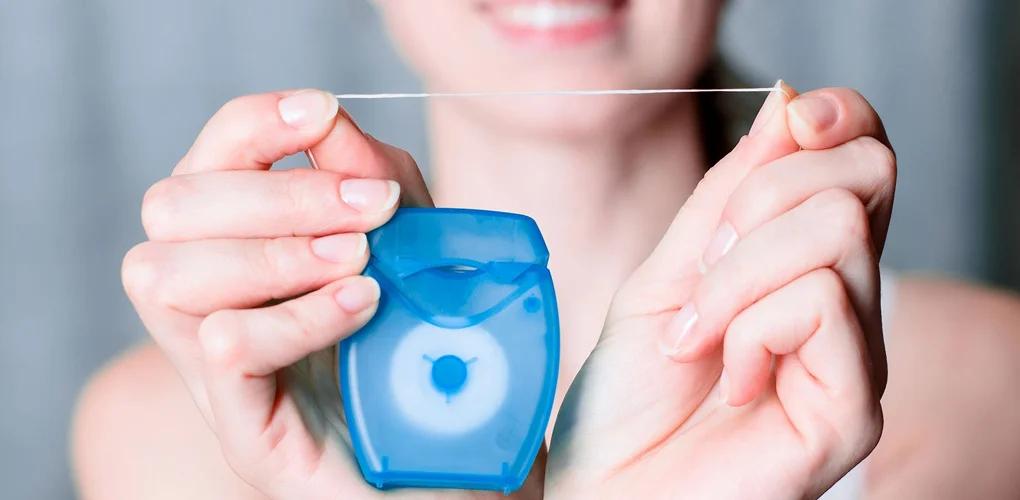`
Dental Floss: A Step-by-Step Guide
A lot of people find it difficult to floss regularly but brushing is insufficient to maintain dental health. Flossing is the most important regimen of oral care. Flossing is vital to maintain good oral hygiene and a healthy and attractive smile.
Flossing helps prevent cavities and gum disease by removing food particles and plaque from in between teeth and along the gum line. The right selection of gum dental floss is necessary for good oral hygiene. Experimenting different floss could be useful to find the one that best suits your oral needs.
A key for successful dental flossing is consistency. It is better to add flossing a part of oral care before going to bed. Flossing at night prevents plaque buildup while sleeping. Moreover, flossing every tooth is mandatory to achieve optimal oral care.
Types of Dental Floss
There are different types of dental floss available because every person has different oral conditions, and no single floss is suitable for everyone. The dentist suggests dental floss as per your unique dental needs. Following are the common types of dental floss:
1. Waxed Dental Floss
Waxed dental floss is made up of nylon and layered with wax. Waxed floss slides easily between teeth and does not get stuck between rough edges. Waxed dental floss does not break easily compared to unwaxed dental floss.
2. Unwaxed Dental Floss
Unwaxed dental floss is made up of nylon and does not have wax layer. Unwaxed dental floss fits better between interdental spaces and absorbs food particles, but it can break easily.
3. Dental Tape
Dental tape or tape floss is broader and thicker than conventional floss. Dental tape is good for individuals with more natural spaces and a person with braces.
4. PTFE (polytetrafluorethylene) Floss
PTFE floss is the same material used in high-tech Gore-Tex fabric. PTFE floss easily slides between teeth and is suitable for crowded teeth. Be cautious and consult with a dentist before using PTFE floss because PTFE floss has perfluorooctanoic acid (possible carcinogenic).
Benefits of Using Dental Floss
Dental flossing plays a vital role in maintaining good oral health. Some of dental floss advantages include:
- Prevents plaque accumulation
- Prevents gum diseases
- Reduces the risk of interproximal cavities
- Reduces chances of bad breath
Flossing has other benefits apart from oral cavity such as:
- Boosts immune system
- Reduces risk of respiratory diseases
- Reduces risk of heart problems
How to Use Dental Floss Properly
Flossing is a major part of dental hygiene as it prevents plaque buildup and tooth decay. Improper flossing is equivalent to not flossing at all. The proper technique of flossing is necessary to ensure its effectiveness.
1. Step-by-Step Guide
Take dental floss of about 18 inches length and wrap around middle fingers leaving roughly 4 to 4.5 inches space between fingers. Now, support dental floss with the tip of index finger and slide between teeth. Scrape the sides of tooth with dental floss 2-3 times. Be sure to clean both surfaces of a tooth and discard dental floss after scraping all teeth.
2. Common Mistakes to Avoid
- Flossing at the wrong time
- Flossing after brushing
- Failing to floss all teeth
- Staying above the gum line
- Stopping flossing when you see blood
Dental Floss for Different Needs
Several types of dental floss are available to fulfil every individual’s unique oral need. There is no single dental floss that will suit every person or every oral condition.
1. Braces
Waxed dental floss is the preferable option in patients wearing braces. Waxed floss does not shred by engaging with brackets or wire. Interdental brushes are the great alternative to dental floss for braces during orthodontic treatment.
2. Bridge and Implants
Teflon floss is a non-shredding and smooth thread that is less likely irritate gums and allows easy cleaning beneath implants or bridge and gum line.
Flossing Techniques
1. Traditional Flossing
Traditional flossing is removing food particles between teeth with dental thread (waxed or non-waxed) under gum line. Traditional string floss is the most effective method to remove bacteria and food debris.
2. Floss Picks
It is a small disposable plastic tool with curved handles that holds a piece of dental floss. It makes easy grip of dental floss compared to traditional floss. Floss picks clean part of a tooth but not a complete tooth.
3. Water Flossing
Water flosser or oral irrigator is a handheld device to remove food and bacteria between teeth by the stream of water. Water flossing is good to remove plaque between teeth and gums. However, traditional flossing is the most effective in removing tartar-causing plaque till today.
`

